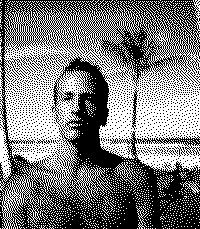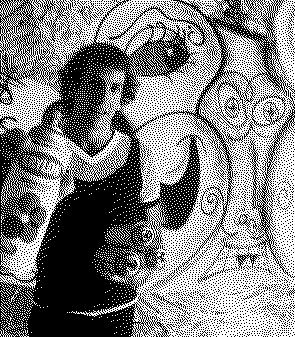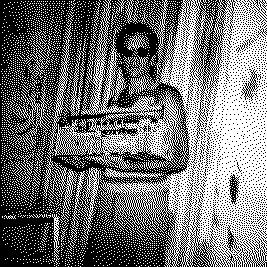Artists/Kenny Scharf
Fast Facts
Fast Facts
Pop Surrealism Pioneer
Kenny Scharf is a prominent figure in the Pop Surrealism movement, which emerged in the 1980s. He played a significant role in defining this art movement, characterized by a fusion of pop culture imagery, surreal elements, and a sense of whimsy.
Cartoon and Sci-Fi Influences
Scharf's art is heavily influenced by cartoons, science fiction, and popular culture. He often incorporates iconic cartoon characters, such as the Jetsons and the Flintstones, into his artwork, creating a playful and nostalgic atmosphere.
Cosmic and Psychedelic Themes
Scharf's work often features cosmic and psychedelic themes, with vividly colored, otherworldly landscapes and creatures. His use of bright, fluorescent colors adds to the sense of wonder and fantasy in his art.
Collaborations and Street Art
Scharf is known for his collaborations with other artists, including Keith Haring and Jean-Michel Basquiat. He is also associated with the street art movement and has created murals and public art installations in various cities.
Environmental Consciousness
In addition to his artistic pursuits, Kenny Scharf has been an advocate for environmental causes. He has used his art to raise awareness about environmental issues, particularly the impact of plastic waste on the oceans.
Playful and Irreverent Spirit
Scharf's art is characterized by a playful and irreverent spirit, challenging traditional artistic boundaries and inviting viewers to engage with his unique and imaginative world.
Continued Relevance
Kenny Scharf's influence on contemporary art and pop culture remains significant, and his work continues to be exhibited in galleries and appreciated for its blend of nostalgia, surrealism, and social commentary.
Biography



Kenny Scharf's enduring influence on both the art world and popular culture underscores his unique ability to bridge the gap between high art and the everyday, creating a legacy that continues to inspire and engage audiences around the world.
Kenny Scharf, born in 1958 in Los Angeles, California, emerged as a vibrant figure in New York City's dynamic East Village art scene during the 1980s. His interdisciplinary practice, spanning painting, sculpture, fashion, video, performance art, and street art, distinguishes him as a pioneer in blending pop culture with fine art. Scharf's work, characterized by its colorful, whimsical, and often fantastical elements, reflects a deep engagement with pop culture icons and science fiction motifs, offering a playful yet poignant commentary on contemporary life.
Scharf's art is deeply influenced by his upbringing in post-World War II Southern California, a context that infused his work with a distinct aesthetic reminiscent of the era's optimistic outlook and burgeoning pop culture. He moved to New York to study at the School of Visual Arts (SVA), where he earned his B.F.A. in painting in 1980. This move marked the beginning of his significant contribution to the East Village art movement, placing him alongside contemporaries like Jean-Michel Basquiat and Keith Haring.
One of Scharf's most iconic contributions to the art world is his creation of the "Cosmic Caverns." These immersive, glow-in-the-dark environments, first conceived in the early 1980s, combined fluorescent paint and everyday objects to transform ordinary spaces into psychedelic experiences. The Cosmic Caverns not only exemplify Scharf's innovative use of materials and space but also his desire to make art accessible and integrated into everyday life (The Art Story) (Ocula Art).
In addition to his immersive environments, Scharf is known for his "Karbombz!" project, which began in 2013. Through this initiative, he offered to spray-paint cars with his signature vibrant, character-filled designs for free, merging the realms of public art and personal expression. This project aligns with Scharf's broader commitment to making art part of the public domain, a principle that has guided much of his career (Ocula Art).
Scharf's collaborations extend beyond the visual arts into music and fashion, demonstrating his multidisciplinary approach. Notably, he designed the album cover for the B-52's "Bouncing Off the Satellites" (1986) and has partnered with fashion brands like Jeremy Scott and Dior. His work has been celebrated in numerous solo exhibitions globally, from the San Francisco Museum of Modern Art to the Lotte Museum of Art in Seoul, and is held in the collections of prestigious institutions like the Whitney Museum of American Art and the Stedelijk Museum in Amsterdam (Ocula Art).
Importance
Kenny Scharf's importance in contemporary art is illustrated through his vibrant contributions to the graffiti and street art movements, his pioneering use of pop culture and cartoon imagery in fine art, and his commitment to environmental activism through his works.
Pioneering Use of Cartoon Imagery
Scharf's work is marked by his early and innovative use of cartoon figures and vibrant, colorful imagery in fine art. Despite facing resistance from the art world for not being "ironic" or for appearing too juvenile, Scharf's work embodies a deeper, more serious engagement with themes of joy, harmony, and the cosmic connection between man, nature, and the cosmos. His murals and paintings create a surreal reality that invites viewers to consider a more harmonious existence (The Art Story).
Solo Exhibitions and Global Recognition
Scharf has held numerous solo exhibitions around the world, showcasing his versatility in different mediums and themes. His shows, such as "Dystopian Painting," "Moodz," "Optimistically Melting," and "Universalis," among others, highlight his ongoing evolution as an artist and his ability to engage with contemporary issues, from environmentalism to the digital age. These exhibitions not only attest to his global recognition but also to his ability to remain relevant and impactful in the ever-changing landscape of contemporary art (Wikipedia).
Environmental Activism Through Art
Scharf has increasingly used his platform to address environmental issues, particularly climate change and pollution. His work, like "What Me Worry? (Blue)," juxtaposes carefree, animated figures against a backdrop of dire global warming headlines, criticizing humanity's apathy towards ecological threats. Through these pieces, Scharf expresses his deep concern for the planet and future generations, using his art to inspire hope, action, and a sense of responsibility towards environmental preservation (The Art Story).
Technique
Kenny Scharf's technique is a testament to his innovative approach, merging pop culture with fine art to create a vivid, engaging, and often critical commentary on modern life. His ability to adapt and evolve his practice while staying true to his vibrant aesthetic and thematic concerns marks him as a significant figure in contemporary art.
Influences and Early Fascinations
Scharf's technique is deeply rooted in his childhood fascination with television and cartoons like The Jetsons, which fueled his obsession with cars, jets, and the American Dream. These early influences are evident in his vibrant, energetic works that combine elements of pop culture with a critical view of modern society's consumerism and environmental issues (The Art Story).
Pop Surrealism and Use of Color
Scharf developed a personal style he describes as "Pop Surrealism," utilizing Krylon spray paint in Day-Glo colors to create psychedelic, cosmic images. His works are characterized by their vivid, saturated colors and often incorporate elements of fantasy, blending pop culture references with surrealistic forms (The Art Story).
Graffiti and Street Art Beginnings
His technique also draws from his early experiences with unsanctioned graffiti in New York's streets and subway lines alongside contemporaries like Keith Haring and Jean-Michel Basquiat. This period was marked by experimentation and a rebellious spirit, using the urban landscape as a canvas for spontaneous, expressive works (The Art Story).
Sculptural Assemblages
Beyond painting, Scharf experimented with creating sculptural assemblages using household appliances and ephemera, such as televisions and plastic toys. These works extend his critique of consumer culture and environmental degradation, turning everyday objects into vibrant, thought-provoking pieces (The Art Story).
Transition to Acrylics
In the mid-1980s, Scharf began to move away from street painting, partly due to health concerns from inhaling spray paint and the impact of losing friends to the AIDS epidemic and drug overdoses. He turned to acrylic paints, continuing to develop his signature vibrant and whimsical style on canvas (The Art Story).
Large-Scale Murals and Installations
Despite moving away from street art, Scharf has continued to create large-scale murals and installations. One notable example is the Kosmic Krylon Garage, a permanent spray-painted installation at the Pasadena Museum of California Art, showcasing his enduring love for bright, expansive works that engage the public (The Art Story).
Collaborations and Pop Culture Interventions
Scharf has engaged in various pop culture collaborations, including creating album cover art and designs for fashion and cosmetics. These ventures further illustrate his ability to fuse art with everyday life, making art accessible and relevant across different platforms (The Art Story).
Iconic Imagery
- Colorful Cartoon Characters
- Doodles
- Airbrush Aesthetic
- Celestial Elements
- Smiley Faces
- Eyeballs
- Abstract Patterns
- Pop Culture References
Themes
Ecological and Environmental Concerns
Kenny Scharf, an internationally acclaimed artist, has long intertwined his vibrant, pop-culture-infused artwork with profound ecological and environmental concerns, particularly focusing on the impact of plastic pollution in our oceans. His commitment to environmental activism is vividly illustrated through his collaboration with Parley for the Oceans, an organization dedicated to addressing major threats towards our oceans, most notably plastic pollution. Scharf's partnership with Parley involved customizing 12 individually painted surfboards to support Parley’s Global Cleanup Network. This initiative not only showcased his unique artistic vision but also served as a tangible contribution to the effort to protect the Yucatán Peninsula in Mexico, a place where Scharf has spent many years and which holds a special significance to him due to its environmental challenges. Each surfboard stands as a surfable symbol of eco-innovation and a call for urgent collaboration to safeguard our oceans. This project exemplifies how Scharf's work transcends traditional art boundaries, merging aesthetic appeal with a pressing environmental advocacy (Parley).
Beyond his collaborative projects, Scharf’s solo works often delve into themes of ecological devastation juxtaposed with technological aspirations, pop culture, and science fiction backdrops, creating a complex narrative around humanity’s impact on the planet. His installations and graffiti paintings, such as his early work featuring Judy Jetson and his immersive "Cosmic Caverns," reflect not only his engagement with the aesthetic and conceptual concerns of art but also a deeper contemplation of our relationship with waste, consumption, and environmental neglect. Through repurposing found objects and infusing everyday items with artistic creativity, Scharf invites a reevaluation of our consumption habits and their long-term impact on the earth's ecosystems (The Art Story).
Scharf's contributions to the art world and environmental activism embody a powerful message of awareness and change. His efforts to blend art with environmental advocacy not only underscore the urgency of addressing ecological issues but also demonstrate the potential of art as a medium for social and environmental transformation.
Consumer Culture
Kenny Scharf's vibrant art deeply engages with consumer culture, reflecting his unique blend of whimsy and critique. Scharf's fascination with the aesthetic of the future, as shaped by his childhood in Southern California during the '50s and '60s, plays a crucial role in his creative expression. This era, characterized by its optimistic outlook and futuristic design—spanning from automobiles to architecture—imbued Scharf with a sense of utopian potential that has consistently influenced his work. However, as time progressed and the once-bright promise of the future began to dim, Scharf chose to perpetuate his love for this idealized future through his art, rather than succumbing to disillusionment. His works often feature elements from this bygone era, such as characters from "The Jetsons," symbolizing his ongoing dialogue with the themes of future and utopia (Flavorwire).
Scharf's engagement with consumer culture is not just a nod to nostalgia but also an exploration of the intersection between everyday objects and cosmic concepts, as seen in his repeated use of donuts in his art. The donut, for Scharf, is not just a confectionery delight but a symbol laden with multiple meanings, from its unhealthy allure to its representation of the universe's shape. This duality of the donut, as both a pop icon and a vessel for deeper cosmological and sexual innuendos, showcases Scharf's ability to infuse ordinary, consumer-driven objects with rich, multilayered significance (Flavorwire).
Moreover, Scharf's work transcends the visual to engage directly with the environments and communities it inhabits. From his early days in New York's East Village art scene alongside Keith Haring and Jean-Michel Basquiat, to his expansive murals and public artworks that blend art with life, Scharf aims to democratize art, making it accessible and engaging for all. His belief in the power of art to transform the mundane into the fantastical and to elevate everyday experiences speaks to a broader philosophy that sees art and life as inextricably linked. Whether through painting appliances or envisioning large-scale public art projects that utilize Los Angeles's car culture, Scharf's work is a testament to his vision of a world where art permeates every aspect of daily life (The Art Story) (Flavorwire).
Kenny Scharf's art is a vibrant celebration of consumer culture, infused with a sense of nostalgia, a critique of contemporary society's pitfalls, and a hopeful gaze towards a utopian future. Through his colorful, playful works, Scharf invites us to re-examine our surroundings and find joy and wonder in the ordinary, challenging us to imagine a world where art and everyday life are seamlessly intertwined.
Nuclear Annihilation
Kenny Scharf's artistry interestingly combines vibrant, cartoonish aesthetics with profound themes of nuclear annihilation, reflecting a unique approach to the dread and absurdity of potential global catastrophe. His work, deeply influenced by the socio-political climate of the 1980s, uses the juxtaposition of carefree, animated worlds against the backdrop of apocalyptic imagery to address his own fears and the collective anxieties of American society during that era. The era was marked by Ronald Reagan's "doomsday rhetoric" on the Arms Race and the harrowing impact of the AIDS Crisis, creating a specific context of apocalypse that Scharf responds to through his art (Brill).
Scharf's paintings, such as those featuring Estelle looking at a mushroom cloud with a cheery smile or his early graffiti murals with Judy Jetson, exemplify his method of engaging with these heavy themes through a lens of escapism and pop culture. This blending of the horrific with the benign serves as both a coping mechanism for Scharf and a critique of society's seemingly oblivious or negligent attitudes toward its own destructive tendencies. His work suggests a desire to trivialize, and perhaps thereby manage, the overwhelming prospect of global annihilation by embedding it within the familiar and less-threatening context of cartoon and pop imagery (The Art Story).
Moreover, Scharf's exhibitions like "Barberadise," which presented Hanna-Barbera characters amidst scenarios of world annihilation, further demonstrate his ability to intertwine joy with dread, inviting viewers to reconsider their own perceptions of safety, reality, and fantasy in the shadow of potential doom. Through such works, Scharf not only offers a critique but also a form of resistance against the normalization of existential threats, using the medium of art to explore and express complex emotional landscapes (My Modern Met).
Scharf's artistic practice exemplifies how themes of destruction and survival can be navigated through the playful yet poignant use of cultural icons and imagery, encouraging a dialogue on serious global concerns without succumbing to despair. His work remains a powerful reminder of art's ability to confront and transcend the anxieties of its time, offering both a mirror to society's fears and a hopeful vision of creativity as a means of resilience.
Pop Culture and the Jetsons
Kenny Scharf's vibrant engagement with pop culture, particularly through the lens of iconic television shows like "The Jetsons," underscores a deep interplay between nostalgia, futurism, and critical commentary on contemporary society. His artwork, characterized by bright, Day-Glo colors and cartoon-like figures, is not merely an homage to the animated fantasies of his childhood but serves as a medium to express joy, whimsy, and at times, a critique of modern existential threats.
Scharf's fascination with "The Jetsons" and similar pop culture icons can be traced back to his upbringing in post-World War II Southern California, where the optimistic promise of a futuristic utopia was a prevalent theme in the everyday landscape. This cultural backdrop, coupled with Scharf's personal affinity for the colorful and the cosmic, heavily influenced his aesthetic direction. His work often juxtaposes these cheerful, animated visions with darker themes, such as environmental degradation and the socio-political tensions of the 1980s, including the Cold War and the AIDS crisis. Through this contrast, Scharf's art captures the complexity of American optimism, characterized by a tension between the dream of a technological utopia and the reality of ongoing global and societal challenges (The Art Story) (Writing By Ryan).
The decision to incorporate characters from "The Jetsons" and "The Flintstones" into his work reflects more than a mere artistic preference; it is a deliberate choice to engage with the art world through a lens that many considered too frivolous or juvenile for serious consideration. Despite encountering resistance, Scharf's use of cartoons was not ironic but sincere, offering a surreal yet achievable reality where humanity coexists harmoniously with nature and the cosmos. His murals and paintings, executed solo without assistants, unfold spontaneously, much like a jazz musician's improvisation, showcasing a repertoire of familiar yet ever-evolving themes and motifs (The Art Story).
Furthermore, Scharf's work, such as his exhibitions like "Barberadise," exemplifies a nuanced understanding of time and reality, merging past, present, and future in a non-linear, interconnected cosmos where characters from different eras can coexist. This approach not only highlights the fluidity of time but also emphasizes the artist's critique of and response to the cultural and existential anxieties of his generation. Through his vibrant, engaging, and thought-provoking artwork, Scharf invites viewers to reconsider their perceptions of pop culture, urging a deeper engagement with the art's potential to transcend the mundane and challenge the status quo (Writing By Ryan).
Scharf's legacy is a testament to the power of pop culture in art, bridging the gap between high art and everyday life, and underscoring the role of art as a vehicle for innovation, critique, and transformative joy. His work serves as a colorful reminder of our shared anxieties, hopes, and dreams, encapsulating a unique perspective on time, reality, and the human condition.








